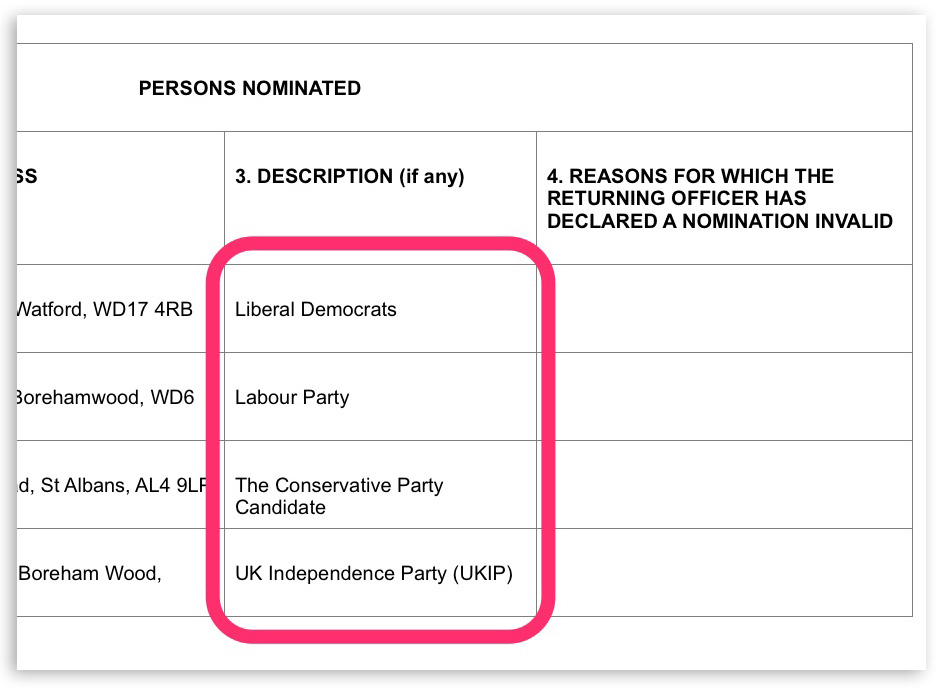There might be a by-election in Hertsmere in the new year. Reform UK is the first to have noticed
Boom. First out the gate. Reform UK is distributing leaflets in Hertsmere in anticipation of a by-election in the new year. Candidate Darren Selkus’s letter to electors says:
If the rumours prove true and Oliver Dowden is granted a peerage in the New Year Honours, it would trigger a by-election right here in Hertsmere. With Labour still in power and the Conservatives in opposition, this presents a unique opportunity for a free vote – a vote for real change, a vote for Reform.
We haven’t heard the rumours Selkus cites, but we have been speculating for a while that Dowden might not relish the prospect of a whole electoral term in opposition.

So, it’s relevant that the Tories have spent the last 14 years packing the red benches; enobling, well, practically anyone, as far as we can tell. The long list of peers they’ve advanced includes the millionaire PPE entrepreneur, the son of a former KGB agent (spending his dad’s money freely in London and in Umbria), the mysterious ‘adviser’ no one can remember and the ‘chief of staff’ who worked for Liz Truss for less than a month. They’ve done this at a greater rate than any government in modern history (we’ve just learnt that these are called malverisation appointments). And it’s not just peers: Conservative governments since 2010 have given ten times more knighthoods and damehoods to MPs in 14 years than Labour did in 13. It doesn’t seem unreasonable to call this out-of-control patronage. They have no shame.

So will Sir Oliver – who scored his knighthood in the final hours of the Sunak government (and picked it up this week at Windsor Castle) – move along the corridor to the Lords in the new year? We’re not so sure. He’s still a young man and the private sector must beckon (although, of course, he might not have much choice in the matter and there’s nothing to stop a peer of the realm from moonlighting at, say, a Mayfair hedge fund).
The operator

We’re quite impressed by military veteran Darren Selkus. He’s an operator. His communication with electors is savvy (and he says that, if elected, he’ll give his MP’s salary to charity, something that at least one of the party’s new MPs is already doing). He suspects he can increase Reform’s vote share at a by-election because voters have greater freedom when they know they’re not selecting the next government (in his letter he calls it a ‘free vote’).

We know this to be true in by-elections – turnout is lower and minority parties can gain share. It’s an intriguing equation. Can an insurgent party have an impact in a home counties seat like ours, between general elections, when the Tories are so firmly embedded? At the July election Selkus won 6,584 votes (just short of 14% of the vote) – more than UKIP at their 2015 high-point and the largest vote for the populist right in the history of the constituency. He must be absolutely beside himself at the prospect of closing the gap at the right-hand end of the chart a bit.

His party’s leader is, by a mile, the most successful British politician of the 21st Century. His relaxed manner, his defiance of silly parliamentary norms and his sure-footed disregard for electoral law have secured for his party a solid and pretty defensible 15% of the national vote. It remains to be seen if a shamelessly, almost defiantly, upper-class character like Farage can get past this percentage while striding around the country in those mustard-yellow cords, though.
More to the point, while the whole hierarchy of his party is drawn from approximately the same gene pool – especially the various braying suits we see on the TV – it’s hard to imagine a breakthrough with the other 85%. Reform is not AfD or FdI or even the Trump GOP. The party’s platform is significantly deeper than it was when it emerged from the Brexit Party but it’s an uninspiring package. There is no exciting radical agenda, no iconoclastic intellectual figurehead, no assault on corporate power in Reform’s future. It’s frankly odd that, having engineered the most consequential constitutional change in recent British history, Farage and his party have no apparent plan to make use of the huge boost to sovereignty produced by Brexit beyond hardening the borders. Their only consolation must be the fact that the two main parties are apparently out of ideas too.
The risk is that the party will exhaust its potential because it’s impossible for this generation of leaders, formed in the anti-immigration and anti-EU campaigns of previous decades, to imagine a modern, emancipatory populist platform (Farage remains obsessed, for instance, with privatising the NHS – not what you’d call a rallying cry for the masses). Still, there’s so much potential for the bigger parties to screw this up that you really never can tell…
The players
We know that Reform aspires to the status of a start-up and the party’s response to the possibility of Dowden’s removal to the Lords is appropriately agile. The established parties probably haven’t even noticed yet. And they’ll almost certainly have to go through another selection process before they can start sending out leaflets. Reform has first-mover advantage.
Labour, when it comes to it, would do well to go with their general election candidate: personable and popular Josh Tapper. His campaign in July was effective and his vote share was among the highest for Labour in the constituency’s history.
To be honest, the Liberals might as well not bother: their 2024 vote share in Hertsmere was close to the party’s 2017 low point (when the candidate was too busy to do any campaigning). To have fallen to fourth place behind Reform in the year of the party’s great revival is just embarrassing.

For the Conservatives, as we keep saying, a by-election in such a peachy seat – one of the safest in Britain – would present an opportunity to bring back one of the big beasts who lost their seats in July. We have no special insight here but surely Grant Shapps must be in with a chance? We would certainly relish having the colourful former web marketing executive and hilariously implausible defence secretary to write about here.
The Greens are bound to show up but their candidate John Humphries (a veteran of two previous general elections in Hertsmere) polled about a third of Selkus’s figure here in July and, although Humphries might also see a by-election boost, the party has essentially disappeared since the election, apparently having no clue what to do with four actual MPs during an actual climate crisis, so we’re not expecting much.
- Here’s our detailed post about the results of the 2024 general election in Hertsmere.
- Farage has told the press that Reform UK will soon no longer be a private limited company and will even adopt a formal constitution, under which the members could, in theory, remove a leader. We won’t hold our breath.
- This spreadsheet is the only place you’ll find results for every general election in Hertsmere since the constituency was created in 1983, plus council elections, PCC elections and groovy charts. It’s yours to download and use.
- Of course, if the rumours that Elon Musk plans to funnel $100M into Reform via the UK subsidiary of his social media business are true then this might alter the party’s prospects a bit.
- We can’t find anyone offering odds on Shapps’ return to Parliament in Hertsmere but we’d probably put a few quid on it if we could. He’s a local boy, he’s obviously still keen (he’s constantly popping up as ‘former defence minister’ and ‘former transport minister’ in the media and he is keeping his web site up to date).
- The image of London in that Reform leaflet is one of those really shonky AI-generated ones that were doing the rounds on social media earlier this year. Another practical, cost-saving move from Reform – no need to pay for an image!
- Speaking of leaflets, whenever you receive an election leaflet through the door you could do posterity a favour and upload it to electionleaflets.org.


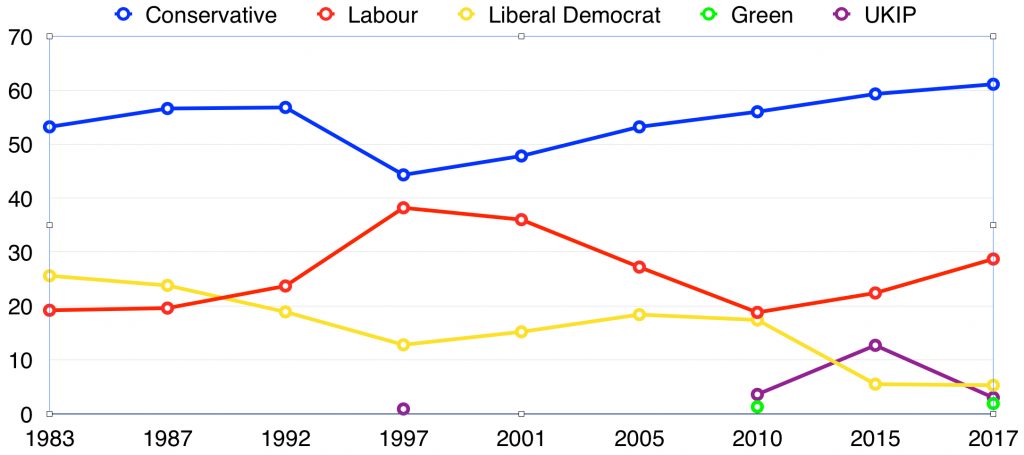 That’s 34 years of Hertsmere General Election voting data, from the Thatcher high water mark of 1983 (the biggest landslide since Labour’s 1945 win, you’ll remember) to 2017’s most surprising result, via that other high water mark – Blair’s even bigger 1997 landslide.
That’s 34 years of Hertsmere General Election voting data, from the Thatcher high water mark of 1983 (the biggest landslide since Labour’s 1945 win, you’ll remember) to 2017’s most surprising result, via that other high water mark – Blair’s even bigger 1997 landslide.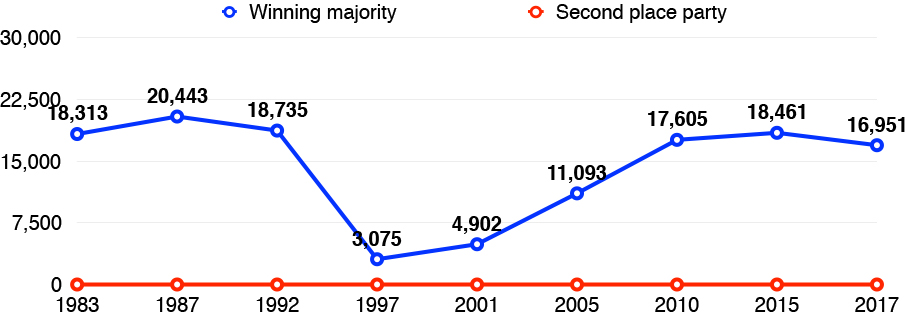
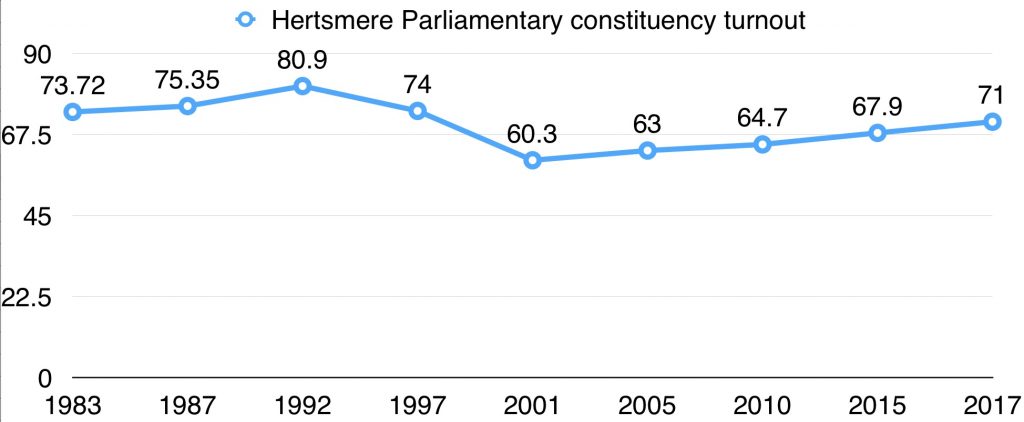

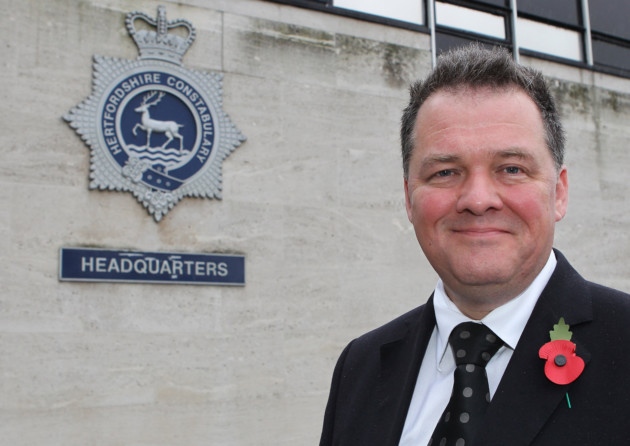 Conservative David Lloyd has been re-elected. Most people don’t know who their
Conservative David Lloyd has been re-elected. Most people don’t know who their  It was never going to be the most exciting of elections for us in Hertsmere. No earthquake for us. It’s a Conservative hold, of course (as it is
It was never going to be the most exciting of elections for us in Hertsmere. No earthquake for us. It’s a Conservative hold, of course (as it is 